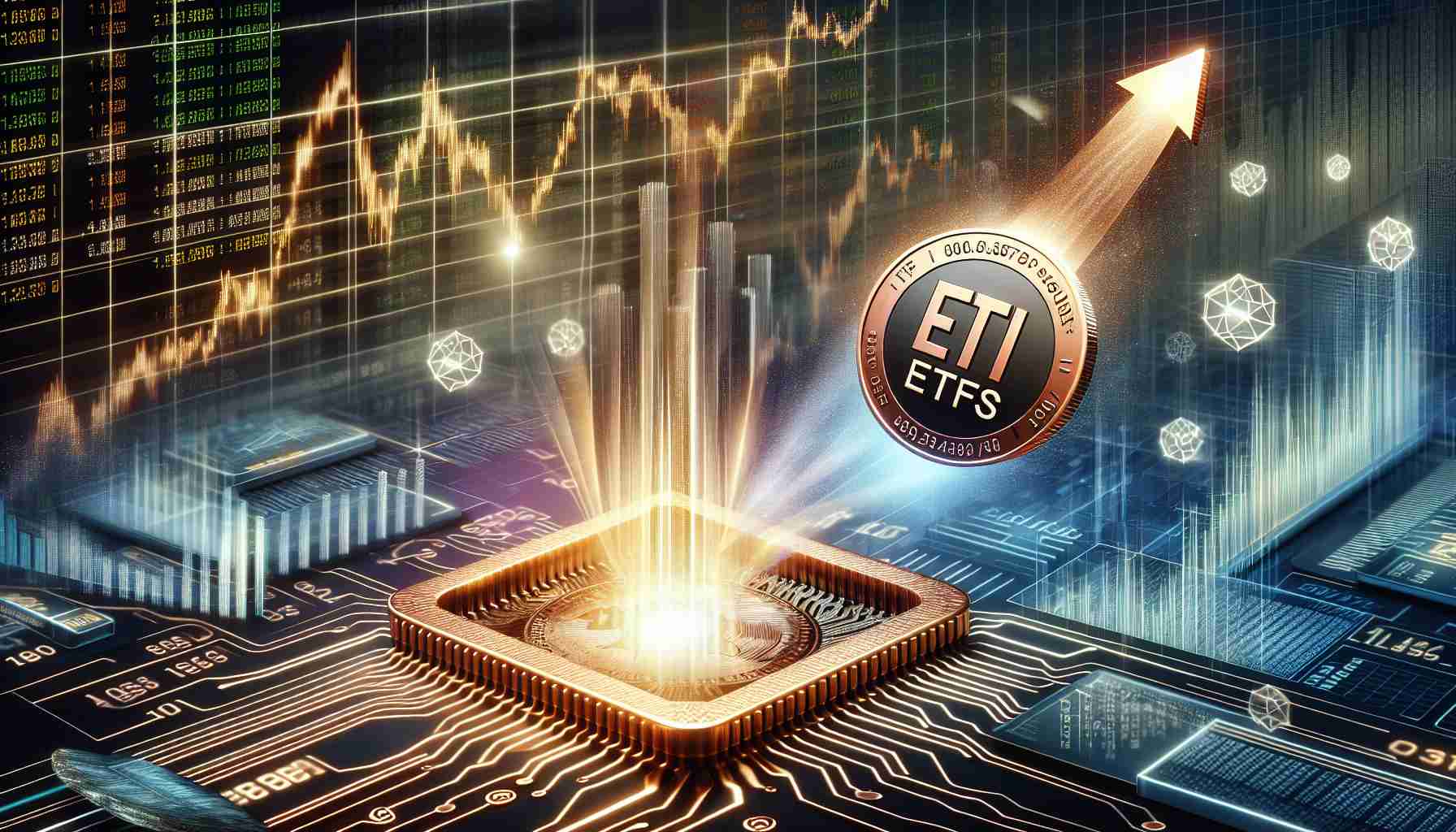Robust Demand for Copper Linked to AI Boom
The global artificial intelligence (AI) revolution is fueling unprecedented demand for copper, leading to a significant price surge for the red metal. The spike in demand can be largely attributed to the proliferation of data centers essential for AI technologies, which rely heavily on copper for their electrical wiring.
Recording Impressive Gains in Copper ETFs
In response to these market dynamics, Copper Exchange-Traded Funds (ETFs), which are financial products based on the asset’s price, have recorded remarkable gains. South Korean trading platforms indicate that copper-related ETFs listed on their exchanges have posted double-digit returns since the start of the year. Among these, the KODEX Copper Futures (H) and TIGER Copper Physical ETFs showed impressive yields of 24.54% and 26.96%, respectively.
Factors Contributing to the Copper Price Rally
Copper futures reached a near historic high on the London Metal Exchange (LME), coming close to their peak value back in March 2022. The scarcity of copper accompanied by the growing need has exacerbated this trend. A notable decrease in available copper stock further emphasizes this disparity, with inventories dwindling by over 37% from the previous year’s close. Underlying this insatiable demand lie the advancements in AI and related technological infrastructures that necessitate substantial copper usage.
Production Challenges Intensify Supply Constraints
The main copper mines, many situated in South America, have faced operational challenges due to extreme weather events and unstable labor relations. This has been compounded by a reluctance to invest in the industry, leading to difficulties in maintaining the supply chain. Chile, the world’s premier copper producer, faced a decrease in output, prompting its Copper Commission to revise its price projections upward for the ongoing and following years.
Experts suggest that the supply shortage could deepen as we approach the mid-2020s, with structural issues implying a sustained upward trend in copper prices. They highlight various factors like increased mining difficulty and decreasing ore grades, which could add to the long-term supply constraints and keep copper prices buoyant.
Impact of Copper on AI and Technology
Copper plays a crucial role not only in data centers but also in various applications within the technological and AI industry. This metal is key for the production of semiconductors, which are essential components of AI technology. Additionally, copper’s excellent electrical conductivity is vital for developing electric vehicles (EVs), which are increasingly incorporating AI features for automation and improved efficiency. The transition to renewable energy sources, like solar and wind power, also heightens demand since copper is an essential element in these power systems.
Market Speculation and Investment Strategies
Investors’ interest in copper ETFs suggests a strategic move to capitalize on the anticipated growth of AI and its corresponding impact on copper demand. These investments signal confidence in the long-term prospects of copper as a commodity integral to technological progress. However, market speculation can sometimes lead to exaggerated price movements, both upward and downward, creating volatility that can impact both producers and consumers of copper.
Environmental and Sustainability Concerns
Increased mining to satisfy copper demand raises several environmental concerns. Mining activities have a significant ecological footprint, causing habitat destruction, pollution, and water use issues. The challenge lies in meeting copper demand sustainably without compromising environmental and social responsibilities. Innovations in mining technologies and recycling efforts are crucial to addressing these environmental challenges.
Advantages and Disadvantages:
Advantages:
– Growth in AI technology could continue to drive the price of copper, benefiting producers and investors in copper-related financial products.
– Copper ETFs offer investors exposure to the commodity without the need to invest directly in physical copper or copper-producing companies.
– The diversified use of copper in various industries besides AI, including construction and renewable energy, supports its demand.
Disadvantages:
– The dependency on copper makes the AI and technology sectors vulnerable to supply chain disruptions and price volatility.
– Environmental impact from increased copper mining can lead to sustainability issues, attracting criticism from environmental groups and potentially leading to regulatory challenges.
– Investments in copper ETFs can be risky due to the cyclical nature of commodity prices and potential speculative bubbles.
Despite these challenges, the rising influence of AI technology on the global economy suggests that copper will remain an important commodity. Innovations in recycling and sustainable mining practices present viable solutions to the ecological concerns associated with increased copper production.
For investors and those interested in the commodities market, reliable information and updates are available at reputable financial news sources and market websites such as Bloomberg or Reuters. These platforms can provide insights into the latest trends and developments in commodities like copper, aiding in informed decision-making.
The source of the article is from the blog krama.net

